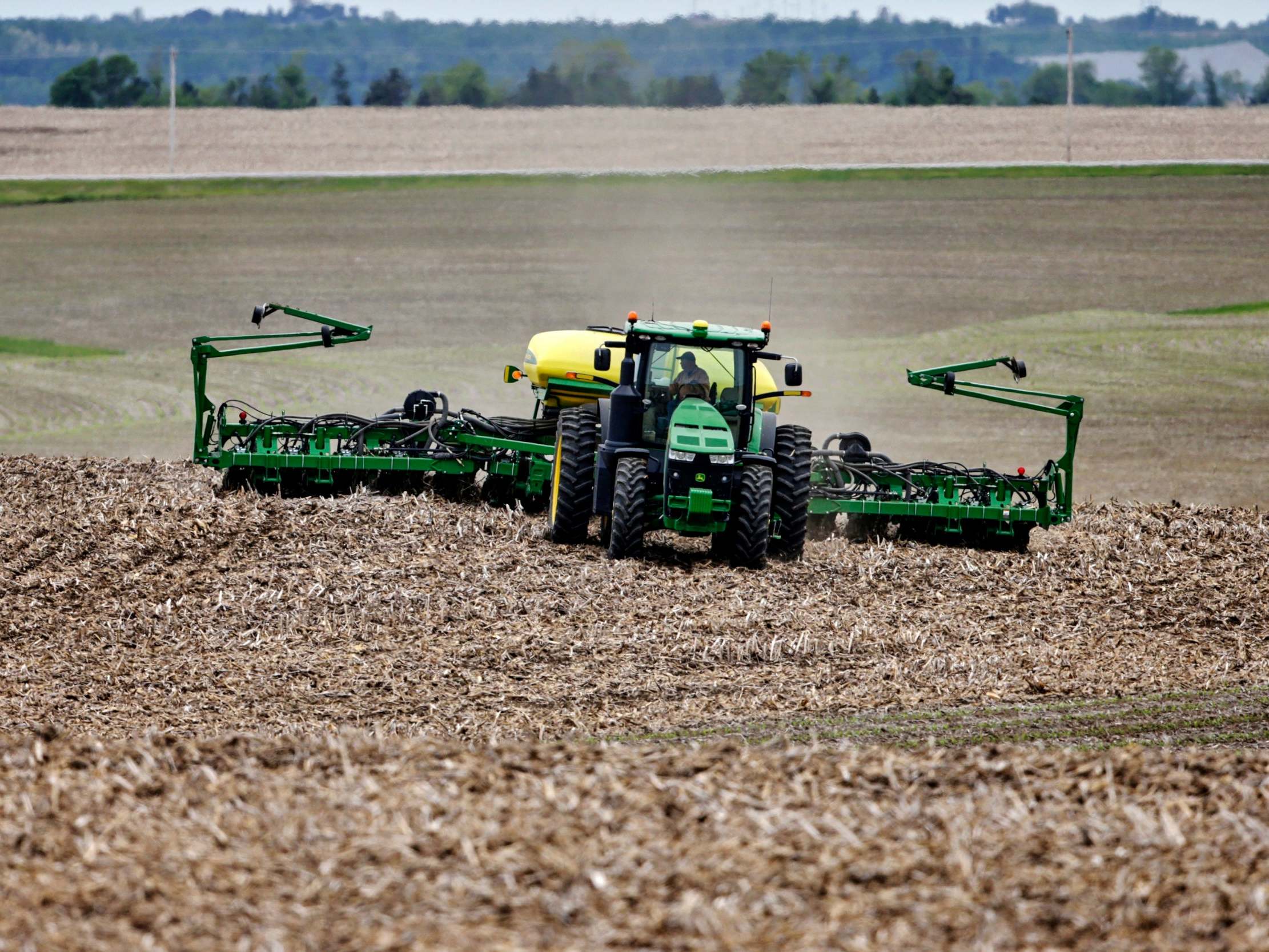Trump's trade war overwhelmingly benefiting large farms while smaller ones struggle, new report shows
Subsidies designed to help farms during the trade war are lining the pockets of large farm owners

Donald Trump’s farm bailouts meant to offset the impact of the US trade war with China are benefiting large corporate farms in America immensely while leaving small farmers in the lurch, according to a new analysis of US Department of Agriculture (USDA) data.
The analysis found that the top 10 per cent of recipients of the payments made through the Market Facilitation Programme (MFP) made to help out farmers and ranchers impacted by Mr Trump’s foreign tariffs have received a whopping 54 per cent of all the payments.
And, some of the largest payments — including $2.8 million that went to a single company, and 82 farmers who received more than $500,000 in MFP payments — vastly overshadow the less than $5,000 received by 80 per cent of farmers.
“The bottom 80 per cent, the vast majority of farms, these guys are much smaller operations. They’re scraping by. They’re the ones taking the brunt of the trade wars,” Donald Carr, an author of the study conducted by the non-profit activist group the Environmental Working Group (EWG), told The Independent.
“For a lot of folks, that’s not going to get them by until next month,” he said.
The MFP programme was set up in 2018, and runs in addition to other subsidies provided by the United States Department of Agriculture, which includes disaster payments, crop insurance subsidies, and commodity subsidies.
The large payouts are made in part through loopholes in payment caps in the system, which were set at $125,000 per person for three categories of crops: cherries and almonds; pork and dairy; and soybeans and other row cops.
Farms can exceed that cap if multiple individuals claim to be “actively engaged” in the farms — a vague designation that Mr Carr said could mean as little activity as participating in a conference call. The designation also means that some who benefit from these outsized payments are individuals who live in some of America’s biggest cities.
All told, EWG data shows that 208 people who live in America’s 50 biggest cities received taxpayer-funded farm subsidies for 33 straight years, at least through 2018.
In response to the findings, the National Farmers Union slammed the distributions, and said it was “alarming that this administration has provided the means for the largest farms to get even larger”.
“We are disappointed that USDA did not use its discretion to focus this aid on family farmers and ranchers who need it the most,” Roger Johnson, the president of the union, told Bloomberg News.
Chuck Grassley, the Senate finance committee chairman whose farm in Iowa received subsidies, said the recent analysis shows there need to be robust caps on trade subsidies.
“The farm program is meant to help people over humps beyond their own control,” Mr Grassley told reporters this week. “Some large farmers do have the benefit of having resources to get over those humps without government help.”
The USDA responded to the analysis, saying the programme “is designed to provide a level of support that’s proportionate to a farm’s size and success”.
Join our commenting forum
Join thought-provoking conversations, follow other Independent readers and see their replies
Comments